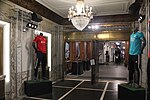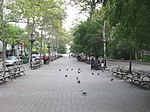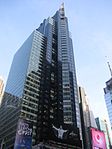Bluebelt
Environmental engineeringProtected areas of New York CityWater infrastructure of New York CityWater pollution in the United States

The Bluebelt is a large scale system of stormwater best management practices (BMPs) in New York City. The program originated on Staten Island in the early 1990s, but has also been implemented in Queens and the Bronx. The Bluebelt includes structural and nonstructural stormwater management control measures taken to mitigate changes to both quantity and quality of runoff caused through changes to land use.
Excerpt from the Wikipedia article Bluebelt (License: CC BY-SA 3.0, Authors, Images).Bluebelt
West 46th Street, New York Manhattan
Geographical coordinates (GPS) Address Nearby Places Show on map
Geographical coordinates (GPS)
| Latitude | Longitude |
|---|---|
| N 40.758 ° | E -73.984 ° |
Address
West 46th Street 140
10036 New York, Manhattan
New York, United States
Open on Google Maps







